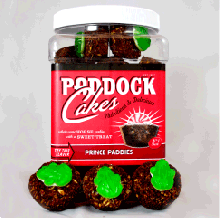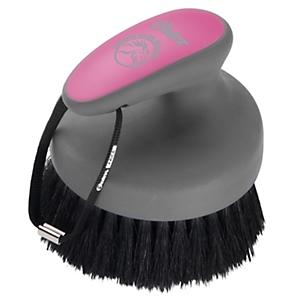When we first started lessons, I recapped all of the issues I was having with Nen and her refusal to go forward. I described her meltdowns and tantrums and that I could not figure out how to get through to the Princess that riding is not only her job but also fun. One of the first things our trainer noticed immediately was how and where I was sitting on Nenya's back.
As you can see, I was too far back in the saddle, on the hollow of her back, which was forcing my leg forward towards her elbow and too far behind the withers. Nenya's physical makeup--a combination of Arabian and American Saddlebred--tends her to be naturally hollow-backed.
Me sitting like I was added to her weakness. Much of her attitude was a result of her telling me that she's ouchie and I wasn't helping. She was moving is short, choppy trots with her head up. Doesn't that just scream uncomfortable?
So training benefit #1: It is immensely helpful to have someone with horse-sense viewing from the ground.
Our trainer took a two-prong approach to fix this issue and help Princess become less ouchie. First was to add a riser between the saddle and pad to better angle the saddle and move me forward. Just this simple piece of 2-inch foam immediately made a gigantic difference in my riding posture, making it much more comfortable for Nenya to move.
This simple change alleviated a large amount of Nenya tantrums in the arena. But as our trainer pointed out, we needed to make a long-term change.
Second part: build up and strengthen Nenya's back. Just like any other physical therapy regiment, it's a long process, but the overall benefits far outweigh the timeline. I wanted Nenya to feel good when she moves under saddle and enjoy being a riding horse. As anyone can tell you, physical therapy is a slow process to ensure you don't cause damage or add too much strain to a weak point. Our trainer suggested a number of exercises along with the use of a neck stretcher to achieve this.
The point of using a neck stretcher is not as a "crutch" to keep Nenya's head down, it's to create resistance--similar to the arm and leg band resistance people use in strength-training (as some argue--there are some people out there who definitely use it to pin their horse's head placement instead of doing the work themselves, which is not the point of this training tool...but I digress). When she puts her head down, to ease the resistance, she is physically inclined to raise her back, which in turn, strengthens her back muscles. Nenya has learned the more she does this, the better her back feels and the better she moves.
As for exercises, we work in small reps in each direction. Using my legs to add pressure and stronger placement of my hands, I push Nenya into the bit by dropping her head. This has two benefits--constant contact with her mouth and sides and by lowering her head, she's raising her back, which in turn widens her stride. We do short amounts of reps as a warm-up and then I do a few reps at a walk to cool down at the end of our ride.
As I said, it's a slow process, but what a difference this has made already. From this:
To this:
And how can I tell that she's feeling much more fit since we started this process almost 4 months ago? She is even moving better on the ground--naturally dropping her head and raising her back.
Photo credits: Before training photos by Davin Schreiber; After training photos by Anne Johnson.






































